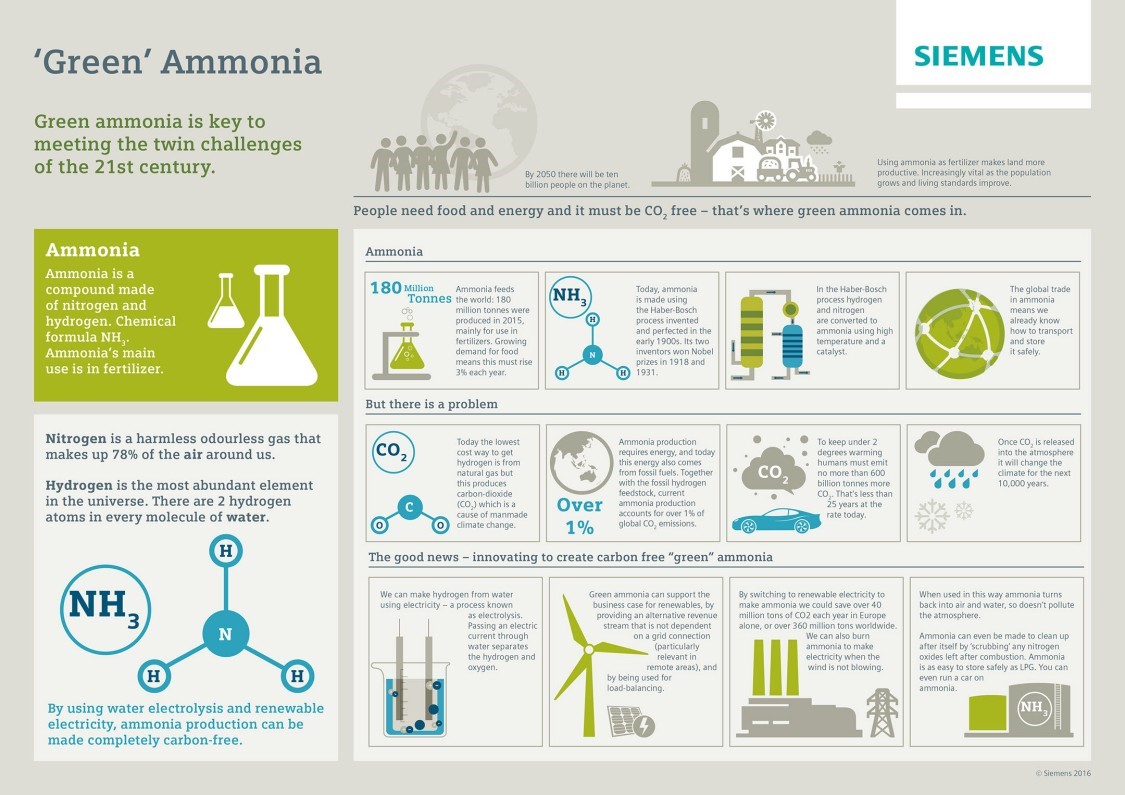Description

Disclaimer: Copyright infringement not intended.
Context
- Green Ammonia Imported through VOC Port, Tamil Nadu for the first time.
Details
- Green ammonia, also known as sustainable or renewable ammonia, is an innovative and eco-friendly form of ammonia production that is gaining prominence in the global energy landscape.
- It is produced using renewable energy sources, such as wind, solar, or hydropower, and serves as a promising energy carrier with applications in various sectors, including agriculture, transportation, and energy storage.
Production of Green Ammonia
- Haber-Bosch Process: Traditional ammonia production relies on the energy-intensive Haber-Bosch process, which consumes a significant amount of natural gas and emits substantial greenhouse gases (GHGs), mainly carbon dioxide (CO2).
- Electrolysis: Green ammonia production involves an alternative approach called "electrolysis," which utilizes renewable electricity to split water (H2O) into hydrogen (H2) and oxygen (O2). This hydrogen is then used to synthesize ammonia (NH3) through the Haber-Bosch process, but with zero carbon emissions.
- Renewable Energy Sources: The key to green ammonia production is the use of renewable energy sources, such as solar, wind, or hydropower, to power the electrolysis process. This ensures that the entire production cycle is emissions-free.

Applications of Green Ammonia
- Agriculture: Green ammonia can serve as a sustainable and carbon-neutral source of fertilizer. It can replace traditional ammonia-based fertilizers, which are carbon-intensive to produce, thereby reducing the carbon footprint of agriculture.
- Energy Storage: Green ammonia can be used as an energy carrier and energy storage medium. Hydrogen, a component of ammonia, can be extracted when needed to generate electricity or serve as a fuel for fuel cells, making it a versatile energy storage solution.
- Transportation: Ammonia can be used as a clean and efficient fuel in the transportation sector. It can power fuel cell vehicles or be utilized in ammonia-powered combustion engines, reducing emissions.
- Industrial Processes: Green ammonia can replace conventionally produced ammonia in various industrial processes, such as refrigeration, chemical manufacturing, and the production of explosives.
Advantages of Green Ammonia
- Carbon Neutrality: The primary advantage of green ammonia is its carbon neutrality. By using renewable energy sources for production, it eliminates carbon emissions associated with traditional ammonia production.
- Versatility: Green ammonia can be used as a fertilizer, energy carrier, and energy storage medium, making it a versatile and multi-purpose resource.
- Reduced Dependency on Fossil Fuels: It reduces reliance on fossil fuels for ammonia production, contributing to energy independence and sustainability.
- Clean Transportation: As a fuel, green ammonia can power vehicles with lower emissions, reducing air pollution and greenhouse gas emissions.
Challenges and Considerations
- Energy Efficiency: Electrolysis processes need to become more energy-efficient to make green ammonia production economically viable.
- Infrastructure: Developing the necessary infrastructure for green ammonia production, storage, and transportation is a significant challenge.
- Costs: The initial investment in renewable energy sources and electrolysis equipment can be high, although costs are expected to decrease as technology advances.

Conclusion
Green ammonia holds promise as a sustainable energy carrier and a carbon-neutral alternative to traditional ammonia production. Its applications in agriculture, energy storage, transportation, and industry have the potential to significantly reduce carbon emissions and contribute to a more sustainable and eco-friendly future. As technology continues to advance, green ammonia may play a vital role in the transition to a cleaner and greener energy landscape.
|
PRACTICE QUESTION
Q. How can green ammonia contribute to a more sustainable energy landscape, and what steps should be taken to promote its adoption on a global scale? Explain with relevant examples. (250 Words)
|











